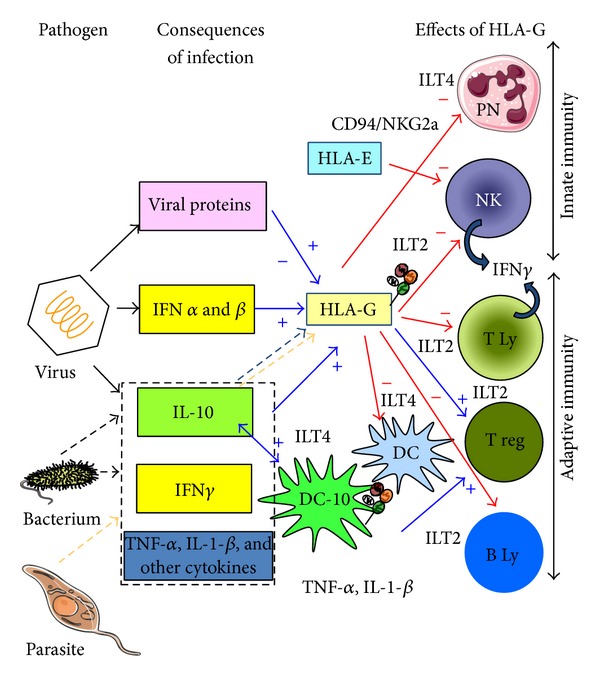Figure 1.

Causes and consequences of HLA-G modulation in infectious diseases. Positive and negative effects of HLA-G are shown in blue and red, respectively. Parasites, bacteria, or viruses induce the secretion of various cytokines, including IL-10 and interferon (-γ for bacterium and IFN-α and -β for virus). These cytokines upregulate the expression or secretion of HLA-G. In addition, IL-10 induces IL-10-producing human dendritic cells (DCs), termed DC-10, expressing HLA-G and ILT4. HLA-G induces tolerogenic DC in addition to DC-10 and regulatory cells via direct interaction with ILT2 and/or ILT4. HLA-G, through direct interaction with ILT2, inhibits the function of T and NK cells and B cells, whereas it inhibits the function of granulocytes and myeloid DC via direct interaction with ILT4. Indirect effects of HLA-G are mediated by the induction of HLA-E cell surface expression, which inhibits CD94/NKG2a on NK and T cells. The consequence of HLA-G action is a downregulation of innate and adaptive immunity.
